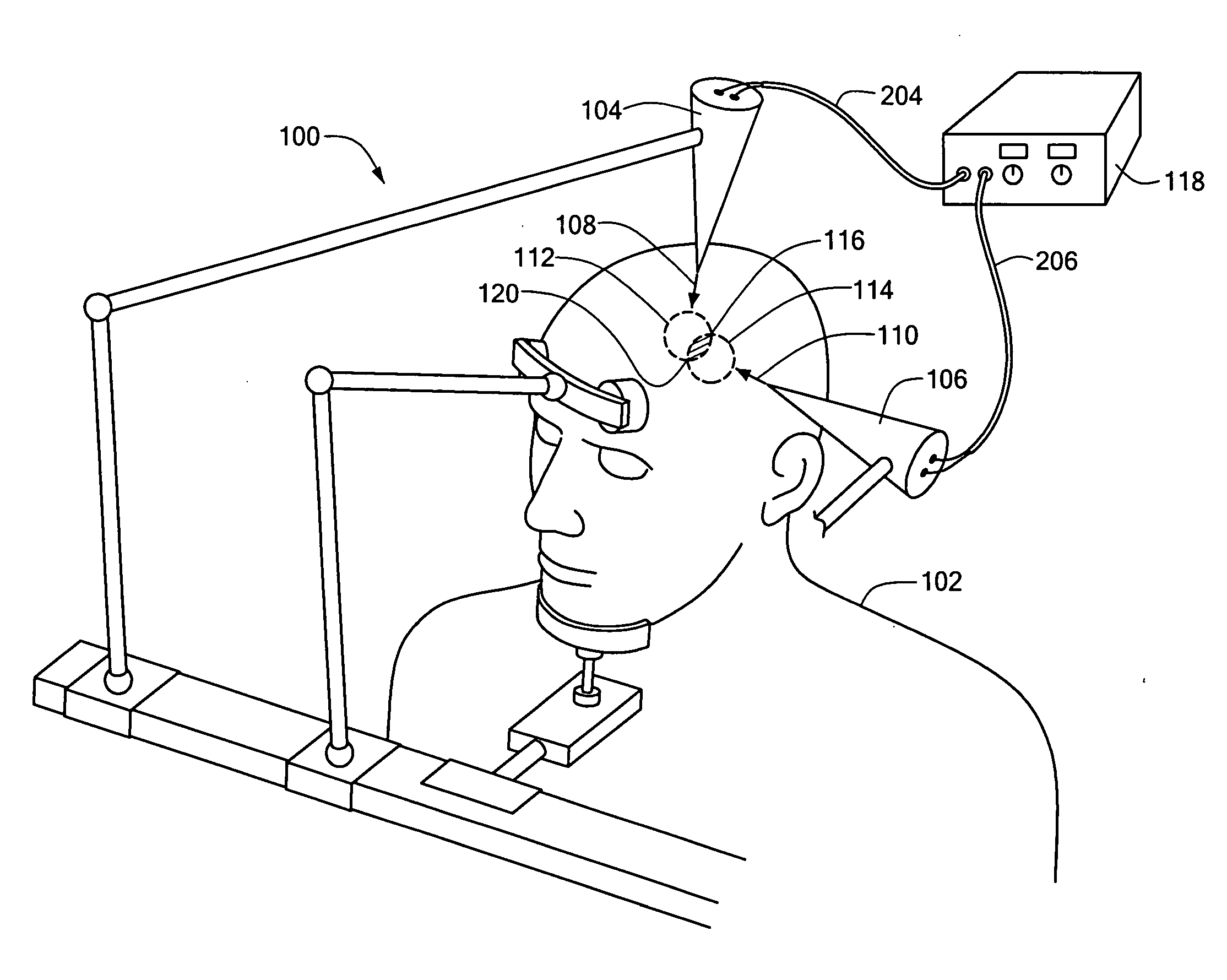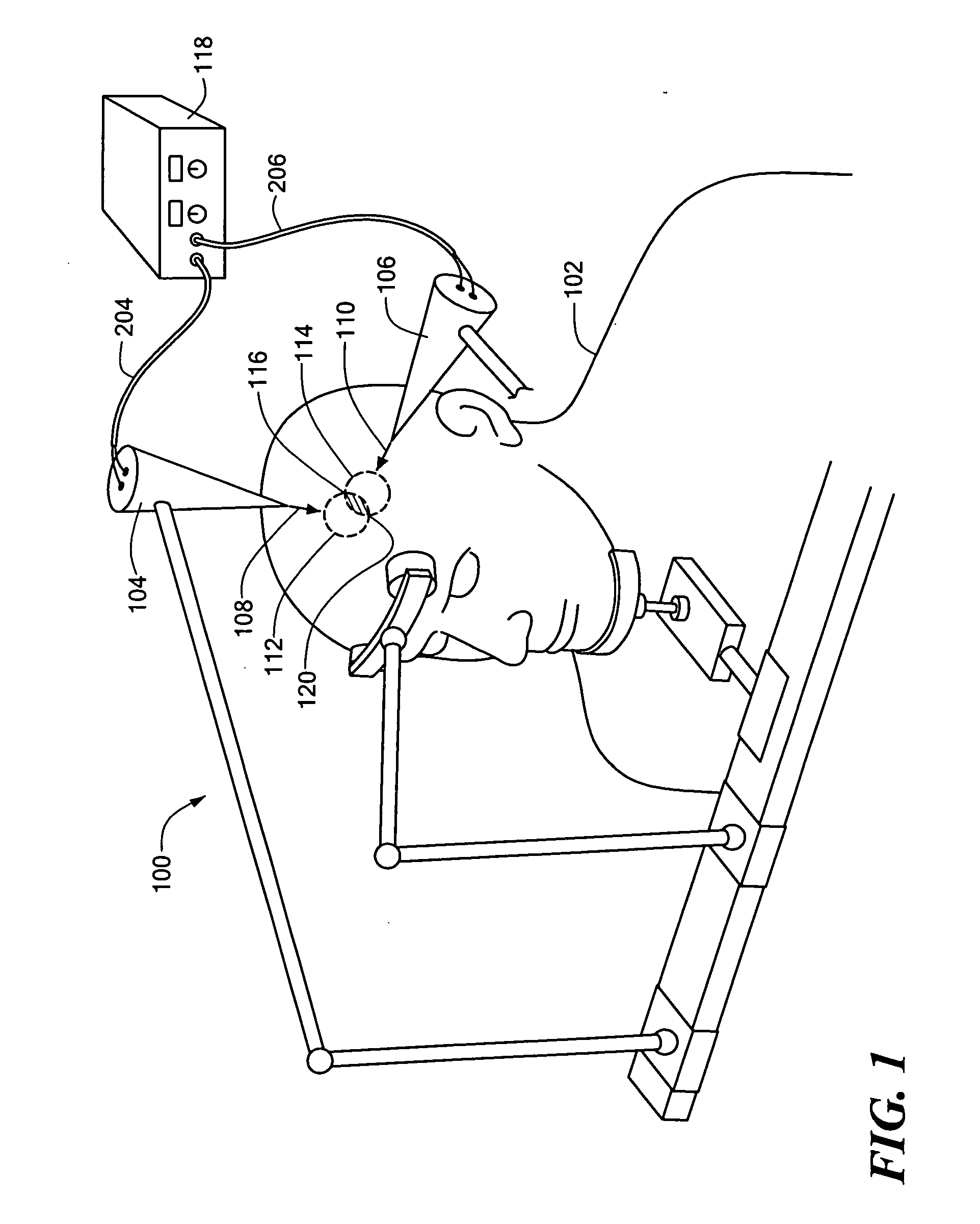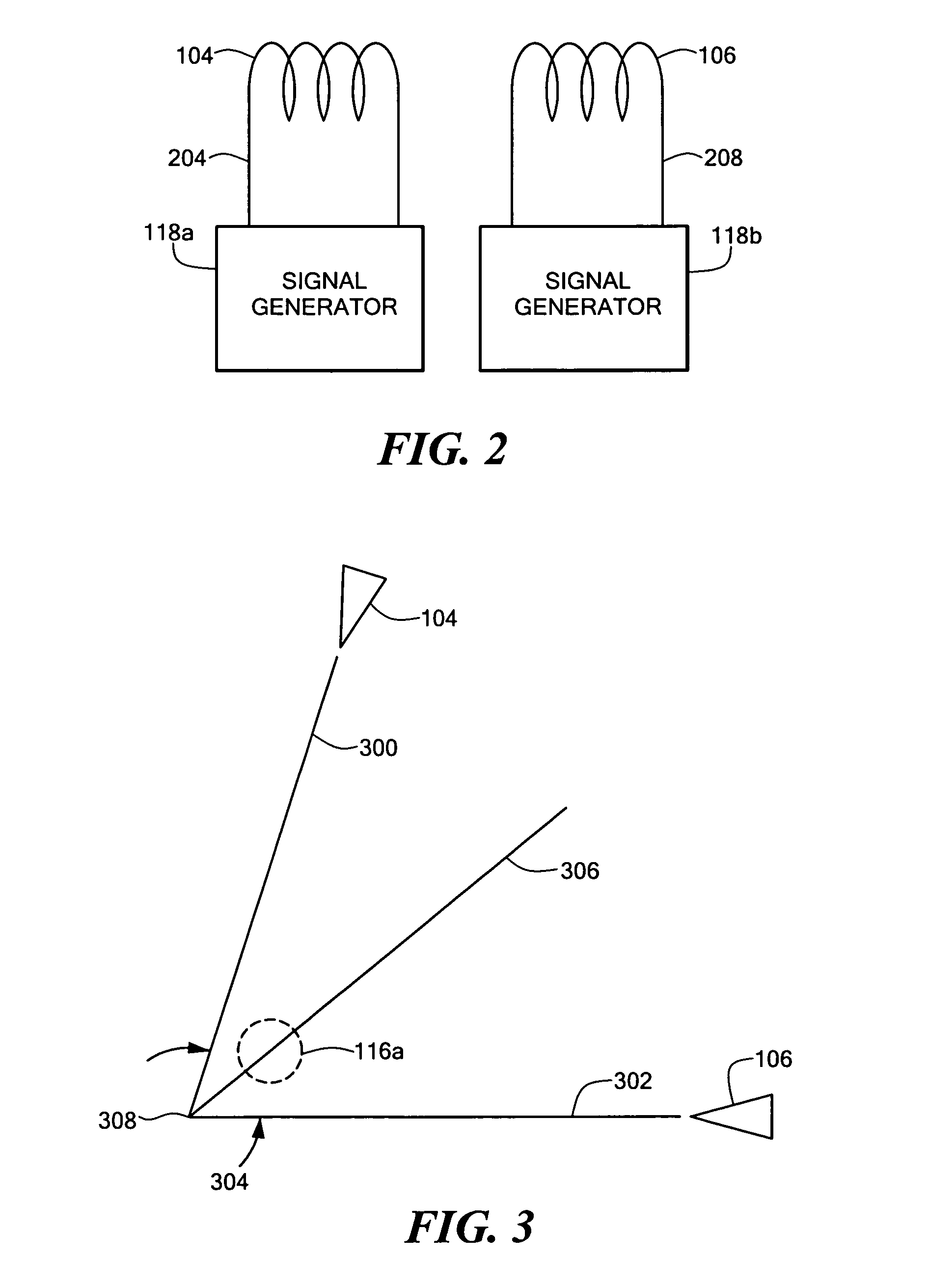Magnetic stimulator
a magnetic stimulation and tissue technology, applied in magnetotherapy, magnetotherapy using coils/electromagnets, magnetotherapy, etc., can solve the problems of skin or muscle twitching or pain, invasive electrical stimulation of tissue below the skin of a subject, and reducing the efficiency of intercellular links
- Summary
- Abstract
- Description
- Claims
- Application Information
AI Technical Summary
Benefits of technology
Problems solved by technology
Method used
Image
Examples
Embodiment Construction
[0029] Embodiments of the present invention use at least two coils to deliver at least two time-varying magnetic fields to a body. Each magnetic field induces an electric field and electric currents in electrically conductive tissues, such as nerves or muscles, within a portion of the body. Each electric field and its currents may extend beyond its respective magnetic field, because of the conductive nature of the tissues.
[0030] The at least two magnetic fields need not necessarily intersect, however the coils are oriented such that the electric fields or currents intersect in a target region of the body. The coils are preferably driven at frequencies and amplitudes that do not directly cause significant tissue stimulation, but a beat frequency signal produced in a region where the electric fields or currents intersect (the intersection region) alternates at a frequency (the beat frequency) that stimulates excitable tissue in the target region.
[0031] In clinical or experimental co...
PUM
 Login to View More
Login to View More Abstract
Description
Claims
Application Information
 Login to View More
Login to View More - R&D
- Intellectual Property
- Life Sciences
- Materials
- Tech Scout
- Unparalleled Data Quality
- Higher Quality Content
- 60% Fewer Hallucinations
Browse by: Latest US Patents, China's latest patents, Technical Efficacy Thesaurus, Application Domain, Technology Topic, Popular Technical Reports.
© 2025 PatSnap. All rights reserved.Legal|Privacy policy|Modern Slavery Act Transparency Statement|Sitemap|About US| Contact US: help@patsnap.com



